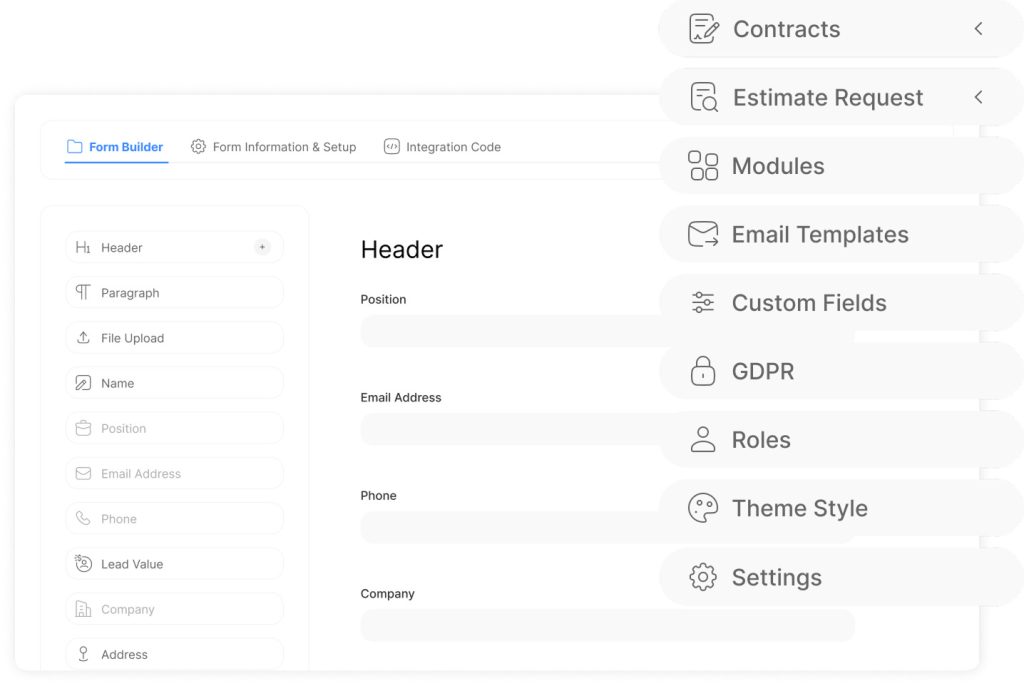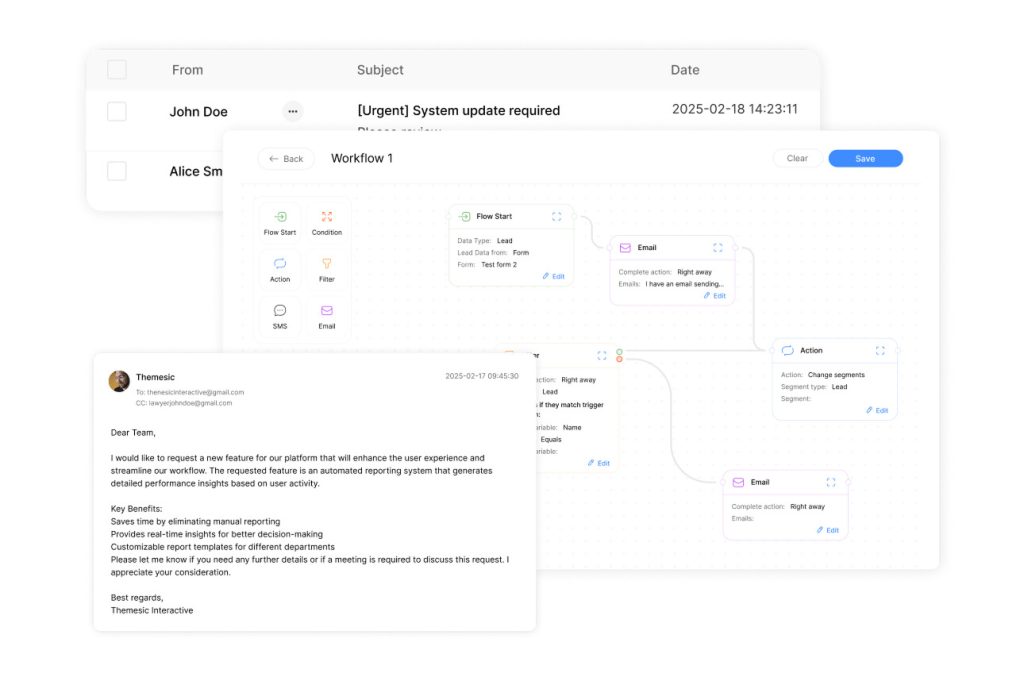Embed Lead Forms: Strategies for Improved Lead Capture

In today’s competitive digital landscape, converting website visitors into prospects requires precision. Businesses leveraging strategic placement of data collection tools see three times higher engagement than those relying on outdated methods. These solutions act as gateways that turn casual browsers into actionable contacts without disrupting the user experience.
Current-generation platforms enable seamless integration with websites and CRMs, ensuring real-time data flow. For example, companies using comprehensive marketing automation solutions reduce manual entry errors by 67%. This approach maintains brand consistency while capturing critical details during peak interest moments.
Behavioral analytics now power adaptive form displays. A retail brand increased qualified leads by 41% by showing tailored fields based on page navigation patterns. Such personalization eliminates friction, with abandonment rates dropping below 12% in optimized setups.
Forward-thinking teams connect these tools to nurture workflows. Instant alerts to sales reps shorten response times, while automated follow-ups keep prospects engaged. The result? Organizations report 29% faster deal closures compared to traditional lead generation tactics.
Key Takeaways
- Properly positioned data fields increase conversion rates by minimizing user effort
- Integrated systems ensure immediate lead processing and reduce operational delays
- Timing form displays based on user behavior improves relevance and completion rates
- Automated routing accelerates sales team response times to hot prospects
- Ongoing performance analysis identifies opportunities for further optimization
Understanding Lead Capture and Its Benefits

Effective customer acquisition in the digital age demands more than just visibility—it requires intelligent conversion mechanisms. Businesses that master strategic data collection see 58% higher prospect quality than competitors using generic approaches. These systems identify high-potential visitors through behavioral triggers, enabling targeted engagement instead of random outreach.
Make sure your website pages incorporate forms in visible areas rather than hiding them at the bottom, ensuring your audience sees calls-to-action at the top of the page.
Conversion Architecture in Sales Pipelines
Well-designed data collection tools act as precision filters within sales pipelines. A travel company increased qualified leads by 33% by placing targeted fields after users viewed pricing pages. This method captures details when interest peaks, creating warm prospects instead of cold contacts.
“The best marketing funnels convert curiosity into commitment through timed value exchanges.”
Driving Meaningful Interactions
Modern solutions turn passive browsing into active dialogues. When a software firm matched form length to content depth, completion rates jumped 41%. Users received instant access to whitepapers after sharing contact details—a fair trade that builds trust.
Key advantages include:
- Real-time segmentation based on user-provided data
- Automated routing to appropriate sales channels
- Dynamic field adjustments that reduce abandonment
Advanced systems sync with CRM platforms, enabling instant lead scoring. Sales teams receive prioritized alerts, responding 73% faster to high-intent prospects compared to traditional methods. This efficiency not only streamlines the sales process but also increases conversion rates significantly. By integrating with the best CRM software for lead capture, organizations can ensure they are not only identifying potential clients quickly but also nurturing those relationships more effectively. As a result, teams are better equipped to close deals and drive revenue growth.
Setting Up Your Account and Compliance Requirements
Establishing compliant data collection systems requires meticulous planning. Platforms enforce strict guidelines to protect users and maintain trust. Businesses must balance operational efficiency with regulatory compliance to fully unlock advanced features.
Policy Alignment and Account Eligibility
Google Ads mandates a clean policy compliance history for lead form access. Restricted industries like adult services face automatic disqualification. Even eligible accounts require verification processes that scrutinize spending patterns and campaign integrity.
Key requirements include:
- Minimum $50,000 lifetime spend for Video campaigns
- Active privacy policy linked to all data collection points
- Documentation proving business legitimacy
Smaller advertisers spending $1,000+ monthly can request exceptions. However, approval depends on consistent adherence to platform rules and transparent data practices.
“Compliance isn’t a checkbox—it’s the foundation of sustainable lead generation.”
Regional regulations add complexity. A healthcare provider recently faced restrictions until updating their data storage protocols. Regular audits help maintain access to critical tools while avoiding costly suspensions.
Smart teams proactively align their accounts with evolving standards. This includes updating privacy disclosures whenever collection methods change and maintaining detailed activity logs for compliance reviews.
Embed Lead Forms

Strategic field configuration separates high-performing data collection tools from generic ones. Platforms like Google Ads guide users through campaign creation: navigate to Campaigns, select Leads as the goal, then choose Search, Display, or Video formats. This foundation determines which field types appear during setup.
Building Custom Data Capture Tools
Marketers select from 12+ standard fields like job title or company name during asset creation. Critical rules apply: phone and email fields can’t both be optional, ensuring at least one contact method gets captured. A/B testing reveals that forms with 5-7 fields convert 28% better than longer versions.
- Prioritize work-related details for B2B campaigns
- Use dropdowns for predefined answers like job roles
- Add custom questions to filter low-intent users
Maintaining Dynamic Data Assets
Editing existing tools requires CRM synchronization to prevent data mismatches. When a SaaS company added conditional logic showing different fields based on company size, completion rates rose 19%. Validation rules further reduce errors—phone fields auto-reject entries without area codes.
“Top performers review field effectiveness quarterly, removing underused questions and testing new sequences.”
Platform-specific code adjustments ensure seamless integrations. HubSpot users add onFormSubmit: bcLeadForm.submit to handle submissions. Regular performance checks identify fields needing optimization, creating a cycle of continuous improvement.
Integrating Lead Forms Across Multiple Platforms
Cross-platform form integration bridges gaps in customer journey tracking. Businesses using synchronized data collection methods see 38% higher conversion rates than those with siloed systems. This approach ensures prospects encounter consistent branding and messaging whether watching video content or browsing product pages.
Adding Lead Forms in Google Ads and Display Campaigns
Google Ads supports data collection tools across four campaign types. Video campaigns currently show forms only on Android devices during beta testing. Display campaigns require responsive ads—image-based formats won’t work.
| Platform | Compatibility | Key Requirement |
|---|---|---|
| Google Search | All devices | Lead goal selection |
| YouTube | Mobile only | Android OS |
| Display Network | Web pages | Responsive ads |
Utilizing HubSpot and Pebble for Custom Form Embeds
HubSpot users integrate data tools with video players through embed code adjustments. The process involves three steps: form creation, code customization, and player assignment. Pebble offers flexible field types for unique branding needs.
“Platform-agnostic form solutions increase lead capture efficiency by 47% compared to single-channel methods.” By leveraging these versatile solutions, businesses can streamline their workflows and improve customer engagement across various platforms. Additionally, incorporating free lead automation tools can further enhance this efficiency, allowing teams to focus on nurturing leads rather than on manual data entry. This holistic approach not only saves time but also significantly boosts conversion rates.
Critical integration considerations:
- CRM synchronization prevents duplicate entries
- Mobile-first designs improve completion rates
- API connections enable real-time data flow
Optimizing Campaigns for Higher-Quality Leads

Balancing lead quantity and quality remains a critical challenge in digital advertising. Google Ads provides two distinct optimization options: More volume (default) and More qualified. These settings directly impact campaign performance, lead costs, and sales team efficiency.
Volume vs. Quality: Strategic Trade-offs
The default volume-focused approach simplifies data collection steps to maximize lead counts. This works best for businesses with extended nurturing cycles or large sales teams. A SaaS company using this method generated 1,200 monthly leads but required 14-day follow-up periods. However, the volume-driven strategy may overlook the quality of leads, which is essential for conversion. By mastering lead segmentation techniques, companies can better target their outreach efforts and improve engagement rates. This refined approach not only enhances the efficiency of sales teams but also shortens the nurturing cycle, allowing for a more focused pursuit of high-value prospects.
Quality-focused campaigns add verification layers. A financial services firm saw 37% fewer leads after switching to this mode—but closed deals 22% faster. Additional fields like budget ranges and decision timelines filter casual inquiries.
| Optimization Type | Avg. Cost/Lead | Close Rate |
|---|---|---|
| Volume | $18 | 8% |
| Qualified | $34 | 19% |
Precision Campaign Adjustments
Conversion-focused bidding requires ongoing changes based on performance data. Marketers should:
- Test both optimization types simultaneously
- Analyze lead-to-customer ratios weekly
- Adjust bid strategies during seasonal peaks
“Top-performing campaigns dynamically shift between volume and quality modes based on real-time conversion data.”
Advanced settings enable automatic rule-based changes. A retail brand automated bid reductions for leads taking over 48 hours to convert, improving ROI by 16%.
Implementing Webhook and CRM Integrations

Modern businesses require instant data flow between marketing tools and customer management systems. Real-time synchronization eliminates manual transfers, ensuring sales teams engage prospects while interest remains high. Automated connections reduce errors and accelerate response times by 53% compared to outdated methods.
Setting Up Webhook Integrations for Real-Time Lead Sync
Webhooks act as digital bridges between platforms. Marketers create unique URLs and validation keys during form setup—critical for secure data transmission. Google Ads simplifies this process with built-in configuration steps during asset creation.
Third-party tools like LeadsBridge automate technical requirements. These services generate necessary code elements and map fields to CRM databases. A healthcare provider reduced data entry time by 78% using pre-built connectors.
Leveraging Third-Party Integrations with Zapier and CRM Systems
Platforms like Zapier bypass webhook complexity through API connections. This method offers custom routing based on lead scores or geographic details. Users export submissions via CSV files or automate transfers for 60-day retention periods.
“Companies using multi-system integrations see 61% faster lead processing than manual approaches.”
Essential integration practices include:
- Testing validation keys before deployment
- Creating backup protocols for system outages
- Matching field names across platforms
Advanced setups use conditional logic to trigger specific workflows. A SaaS company increased conversions by 33% by routing high-value prospects to senior sales reps within 90 seconds.
Conclusion
Strategic data capture methods redefine how businesses convert interest into action. Companies adopting intelligent website integration techniques see 52% higher prospect retention than those using static approaches. These systems create natural engagement points where value exchange feels intuitive rather than transactional.
Effective implementation demands technical precision and regulatory awareness. Aligning form designs with CRM automation strategies ensures immediate lead processing while maintaining compliance. Top performers combine behavioral triggers with mobile-first layouts, reducing abandonment rates by 38%.
The shift from basic contact tools to dynamic systems reflects evolving marketing priorities. Modern solutions now initiate personalized journeys – a software firm increased conversions by 27% using conditional logic that routes prospects based on job titles. This evolution turns data collection into relationship-building opportunities.
Organizations mastering these techniques secure lasting competitive edges. They build adaptable frameworks that respond to market shifts while maintaining conversion efficiency. As digital landscapes grow more complex, businesses prioritizing seamless user experiences will dominate customer acquisition channels.

